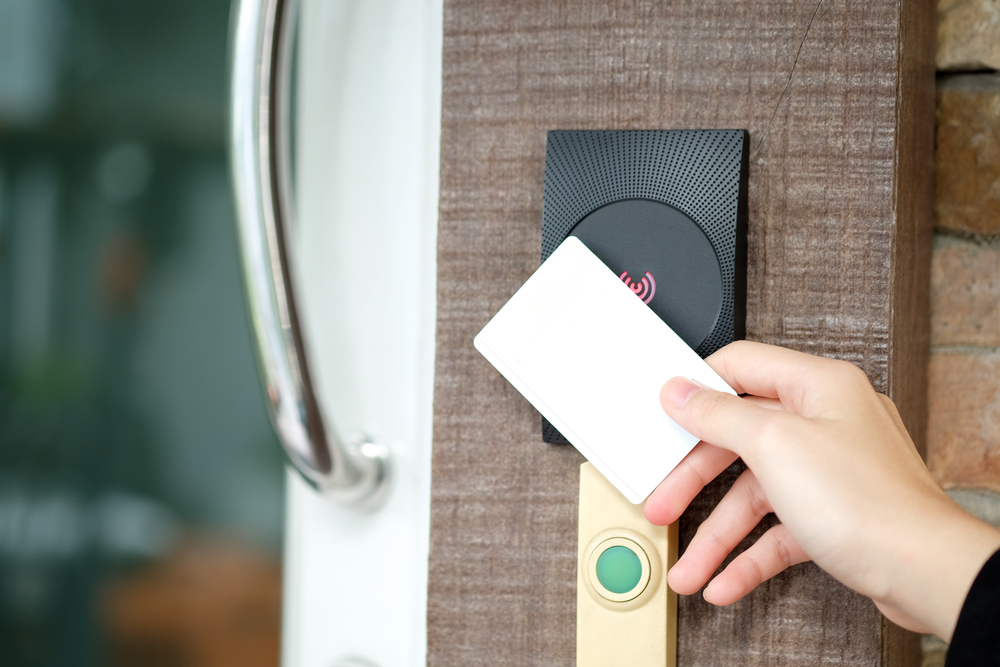Exploring Door Access Control Systems: What are the Types of Door Access Control Systems

Have you ever wondered how some doors open with a card, a fingerprint, or even a mobile phone? Well, that’s the magic of door access control systems! In today’s world, where safety is a top priority, understanding these systems isn’t just for tech whizzes – it’s for everyone. So, let’s dive into the world of door access control systems and discover their types, features, and much more.
What exactly are these systems?
Simply put, door access control systems are like the guardians of a building. They decide who gets in, when, and how. Gone are the days of just locks and keys; these systems have brought security into the 21st century. From small offices to large buildings, they’re everywhere, keeping an electronic eye on the door.
The Evolution: It all started with traditional locks and keys. Then came electronic systems that used keycards, and now we’re looking at biometrics and even smartphone-based systems. It’s a field that’s always evolving, adapting to new technology and new security challenges.
Types of Door Access Control Systems
When it comes to types, it’s like a buffet of options, each with its own perks. Let’s break them down:
- Discretionary Access Control (DAC): Think of DAC like a personal butler who decides who gets in based on rules set by the owner. It’s flexible, allowing owners to give specific permissions to different people.
- Mandatory Access Control (MAC): This is the strict one. In MAC, access is governed by a central authority, and users can’t change permissions. It’s like a bouncer at a club, strictly controlling who gets in.
- Role-Based Access Control (RBAC): As the name suggests, RBAC assigns access based on a person’s role in an organization. For example, managers might have different access than interns.
- Rule-Based Access Control (RuBAC): This one follows rules based on certain conditions, like time-of-day restrictions.
- Attribute-Based Access Control (ABAC): ABAC is like a detective, looking at multiple factors (attributes) before making a decision. It considers things like time, location, and even the risk level.
Here’s a quick comparison table to help you understand better:
| Type | Flexibility | Security Level | Ideal for |
| DAC | High | Moderate | Small offices, homes |
| MAC | Low | High | Government, military facilities |
| RBAC | Moderate | Moderate-High | Corporations, large businesses |
| RuBAC | High | Moderate | Areas requiring time-based access |
| ABAC | High | High | Highly secure environments, data centers |
Key Components of Door Access Control Systems
Every door access control system is made up of several key components. Understanding these is crucial for anyone looking to implement such a system.
- Identification Methods: This is how the system recognizes you. It could be through a key card, biometric data (like fingerprints or facial recognition), or a keypad where you punch in a code.
- Controllers: Think of these as the brains of the operation. Controllers can be either centralized, where one system controls multiple access points, or decentralized, where each access point operates independently.
- Locking Mechanisms: This includes electromagnetic locks that hold doors closed until they’re electronically released, and electric strikes that replace traditional lock strikes but are controlled electrically.
- Software: This is where all the magic happens. The software integrates with other security systems, manages access permissions, and monitors entry and exit logs.
Advanced Features in Modern Door Access Control Systems
As technology evolves, door access control systems get smarter and more sophisticated. Some of the advanced features in modern systems include:
- Integration with CCTV and Alarm Systems: This allows for a comprehensive security setup where everything works together seamlessly.
- Remote Access and Management: Thanks to mobile apps, you can now control access to your building from anywhere in the world.
- AI and Machine Learning: These technologies help in predicting and preventing security breaches before they happen.
Choosing the Right Door Access Control System
Selecting the right system can be daunting, but here are some factors to keep in mind:
- Size of the Facility: Larger facilities might need more complex systems.
- Level of Security Needed: High-risk facilities need more secure, sophisticated systems.
- Budget Constraints: More features usually mean a higher price tag.
Future Trends in Door Access Control Systems
The future of door access control systems is as exciting as it is promising. Here’s a sneak peek into what’s on the horizon:
- IoT Integration: Imagine your access control system talking to other smart devices in your building, optimizing security and efficiency.
- Advanced Biometrics: Beyond fingerprints, future systems might use voice recognition or even heart rate patterns for identification.
- AI-Powered Security: AI could predict potential security breaches by analyzing patterns and anomalies.
Conclusion
So, there you have it – a deep dive into the world of door access control systems. From the basic components to the cutting-edge trends, it’s clear that these systems are pivotal in maintaining the safety and security of our spaces. Remember, the right system for you depends on your unique needs and constraints. Stay safe and choose wisely!
FAQs Section
Can door access control systems be hacked?
Like any technology, they can be vulnerable, but with proper security measures, the risk can be minimized.
How expensive are these systems?
Costs vary widely based on system complexity and features. Basic systems are more affordable, while advanced setups can be quite costly.
Are these systems difficult to install?
Installation complexity depends on the system. Simple systems can be quite straightforward, while more complex systems might require professional installation.
Can I integrate an access control system with my existing security system?
In many cases, yes. It’s best to consult with a professional to understand compatibility.






